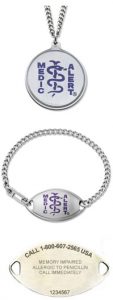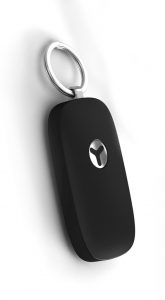Wandering is common in people with dementia. The Alzheimer’s Association reports that six in ten people who are living with Alzheimer’s disease or another type of cognitive impairment either wander or walk off looking for something or someone. As once-familiar places and faces become unfamiliar, people suffering from dementia can experience anxiety and frustration as they try to find places and people that may no longer exist.
Caregivers can help people who wander by getting to know their habits and certain times or events that can trigger the wandering behavior. Having a routine can provide structure and meaning. Identify the most likely times of day that wandering may occur and plan favorite activities for that time. Make sure the person’s basic needs are met. Are they looking for food or the bathroom? Avoid large, noisy crowds and places that can confuse and disorient. If the person wants to “go home” or look for someone, reassure him or her that they are safe.
Have a plan in case someone does wander off. Keep a list of people and phone numbers you can call on to help. Begin search efforts immediately. Ninety-four percent of people who wander are found within 1.5 miles of where they disappeared. Keep a recent, close-up photo and updated medical information on hand to give to police. Keep a list of places where the person may wander (past jobs, former homes, churches, friends’ or relatives’ homes, or restaurants) and check those places first.
In addition to the steps mentioned above, caregivers and relatives can look at the many devices out there in the market that are designed to help locate people who wander. Here are some of the most popular ones:
MedicAlert

MedicAlert® + Alzheimer’s Association Safe Return®
The Alzheimer’s Association offers a program called MedicAlert and Safe Return. The person who wanders wears a bracelet with information and a phone number to call if someone finds them. If a person becomes lost, caregivers can call the 24-hour emergency response line to report it. A community support network will be activated, including local Alzheimer Association chapters and law enforcement agencies, to help locate the missing person. With this service, important medical information can be provided to emergency responders when the person is found through the information provided on the bracelet.
Comfort Zone
The Alzheimer’s Association offers a product called Comfort Zone Check-In, which can determine the location of a person and send daily scheduled location check-ins to a caregiver, indicating where a person is throughout the day. In addition to the scheduled service, the caregiver can use a “Find Me” or “Follow Me” function that provides updates every two minutes for an hour. The tracking can be done through a device the person carries in a purse or pocket or through a smart phone.
GPS SmartSole
GPS SmartSole is a GPS device hidden and sealed inside a shoe insole. It works like a cell phone and uses the same GPS technology. One advantage is that the device is inside the shoe so the person is less likely to lose it or not wear it. It also has a feature where you can map out an area where the person lives (for example a house), and if the person wanders away, the caregiver will receive an email or text alert that they have wandered out of their home or other safe area. Multiple caregivers can log in to check the location of the person being monitored.
PocketFinder

POCKETFINDER+® PERSONAL 3G GPS / Wi-Fi / Cell ID TRACKER
PocketFinder reports it is the smallest tracker on the market with a device that can fit in the palm of your hand. It uses GPS technology for its tracking system and there is an SOS button that the person can push to send an alert to the caregiver if they need help or if someone else finds them. It has a battery life of up to one week and allows caregivers to track wearers through an app using a smartphone, tablet, or computer. It also will send an alert when the person leaves preset “safe” zones, for example the house, garden, or back yard.
Photo Credit: Copyright of product photos and videos belong to their respective companies.


